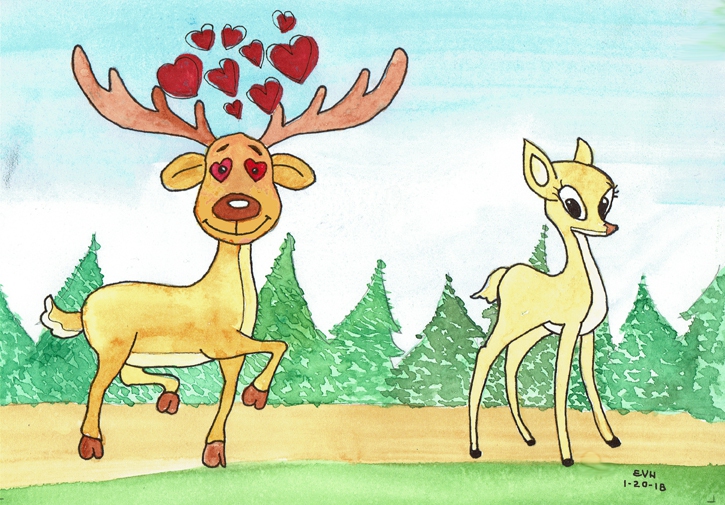
Jataka 13
Kaṇḍina Jātaka
The Mountain Buck
as told by Eric Van Horn
originally translated by Robert Chalmers, B.A., of Oriel College, Oxford University
originally edited by Professor Edward Byles Cowell, Cambridge University
The original translation of this Jātaka is quite misogynistic. Although the Buddha took the radical step of ordaining women, and he went to great lengths to protect them, his equal treatment of women was very unpopular. Over the years this resentment crept into the Pāli Canon. You find much less of this in the Chinese versions of the canon, the Agamas. This is what makes the authenticity of the sexism suspect.
This Jātaka takes on one of the Buddha’s most radical - and equally unpopular - topics, and that is how sense desire causes suffering. Most people think that it is self-evident that happiness in life is about pleasing the senses through food, sex, etc. The Buddha taught that a) chasing sense pleasure is a major source of our suffering and b) that there is a greater happiness that can come from within. This happiness does not cause the harm or have the risks that chasing sense pleasures has, and it can be cultivated by developing the mind.
“Cursed is the arrow of passion.” This story was told by the Master while at Jetavana about the temptation caused to monks by the wives of their worldly life. There was one monk in particular who was obsessed with his worldly wife. The Blessed One said to him, “Brother, it was because of this very woman that in bygone days you met your death and were roasted over glowing embers.” The brothers asked the Blessed One to explain this. The Blessed One made clear what had been concealed from them by re-birth.
Once upon a time in the kingdom of Magadha the King was reigning in Rājagaha, and when the crops were grown the deer were exposed to great perils so they retired to the forest. Now a certain mountain buck of the forest, having become enamored of a doe who came from near a village, was moved by his infatuation with her to accompany her when the deer returned home from the forest. She said, “You, sir, are but a simple buck of the forest. Where I live near the village is full of with peril and danger. So don’t come down with us.” But because of his great passion for her, he would not stay, but went with her.

Figure: The Love-sick Buck
When the villagers knew that it was the time for the deer to come down from the hills, the people of Magadha set an ambush by the road. A hunter was lying in wait just by the road along which the pair were traveling. The young doe smelled the man’s scent and suspected that a hunter was in ambush. So she let the buck go first and followed behind at some distance. With a single arrow the hunter killed the buck, and seeing this, the doe ran off like the wind. Then that hunter came out of his hiding place and skinned the buck, lit a fire, and cooked the sweet flesh over the embers. Having eaten and drunk, he took home the remainder of the bleeding carcass on his carrying-pole to provide a feast for his children.
Now in those days the Bodhisatta was a fairy living in that very grove of trees, and he saw what had happened. “It was passion that destroyed this foolish deer. At the start passion is bliss, but its end is sorrow and suffering. To cause another’s death is an act of evil in this world. Infamy also rules in a land where a man succumbs to desire for a woman and men yield to passion for a woman.”
And then, while the other fairies of the wood applauded and offered perfumes and flowers and the like in homage, the Bodhisatta wove the three infamies into a single stanza, and made the wood re-echo with his sweet tones as he taught the truth in these lines:
Cursed be the arrow of passion that creates such pain!
Cursed be the land where passion rules supreme!
And cursed the fool that bows to passion’s sway!
Thus the Buddha composed in a single stanza these three infamies, and the woods re-echoed as he taught the Dharma with all the mastery and grace of a Buddha.
His lesson ended, the Master preached the Four Noble Truths. At the close of this the love-sick monk was established in the Fruit of the First Path (stream-entry). Having told the two stories, the Master showed the connection linking the two together, and identified the birth.
“In those days,” said the Master, “the love-sick brother was the mountain buck. His wife was the young doe, and I was the fairy who preached the Dharma showing the dangers of passion.”
